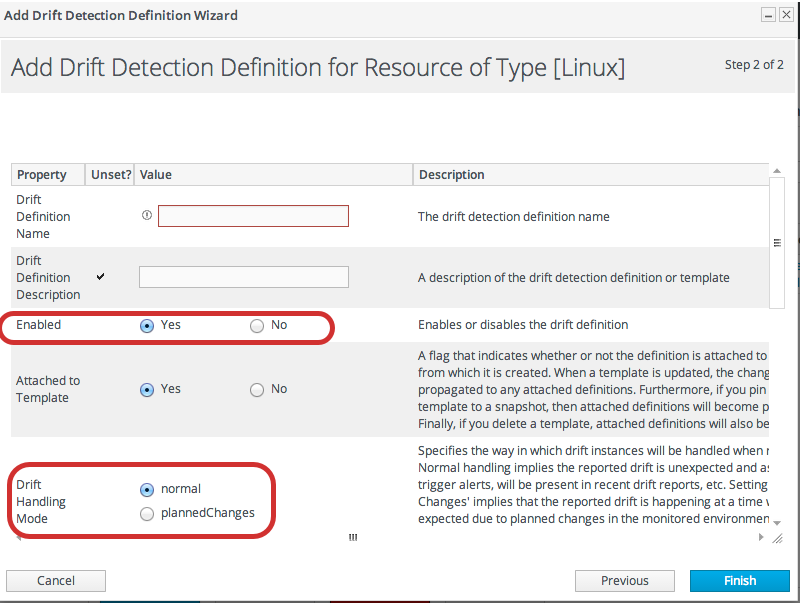此内容没有您所选择的语言版本。
15.11. Setting Planned Changes or Disabling Drift Definitions
The assumption behind drift monitoring is that there is an identified and specific configuration for a platform or application and that that configuration should be preserved. Changes, therefore, are undesirable and need to be monitored.
However, there can be times when changes are expected, such as scheduled maintenance and upgrade periods. In that situation, it's beneficial to suspend drift monitoring to keep from creating unnecessary static with drift alerts.
There are two ways to suspend drift monitoring:
- Set the drift handling mode to planned changes. This keeps running drift detection scans and records changes. Since the changes are expected, though, it doesn't trigger a drift detection event, so it does not issue a drift alert.
- Actually disable the drift definition. This suspends the drift detection runs for the definition, not just drift events.
The drift handling mode and the enable option for the drift definition can be edited in the definition entry, as in Section 15.4, “Editing Drift Definitions”.
Figure 15.5. Drift Handling Mode and Enable Options
